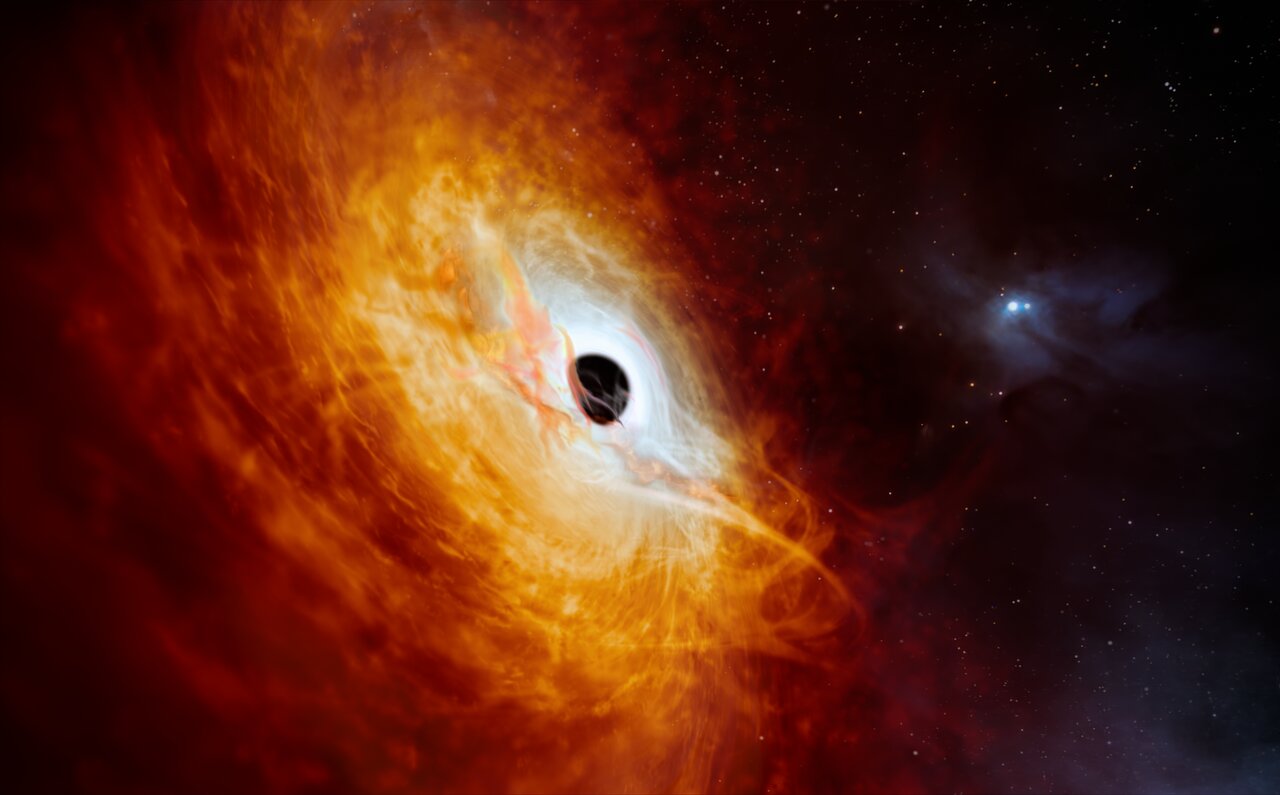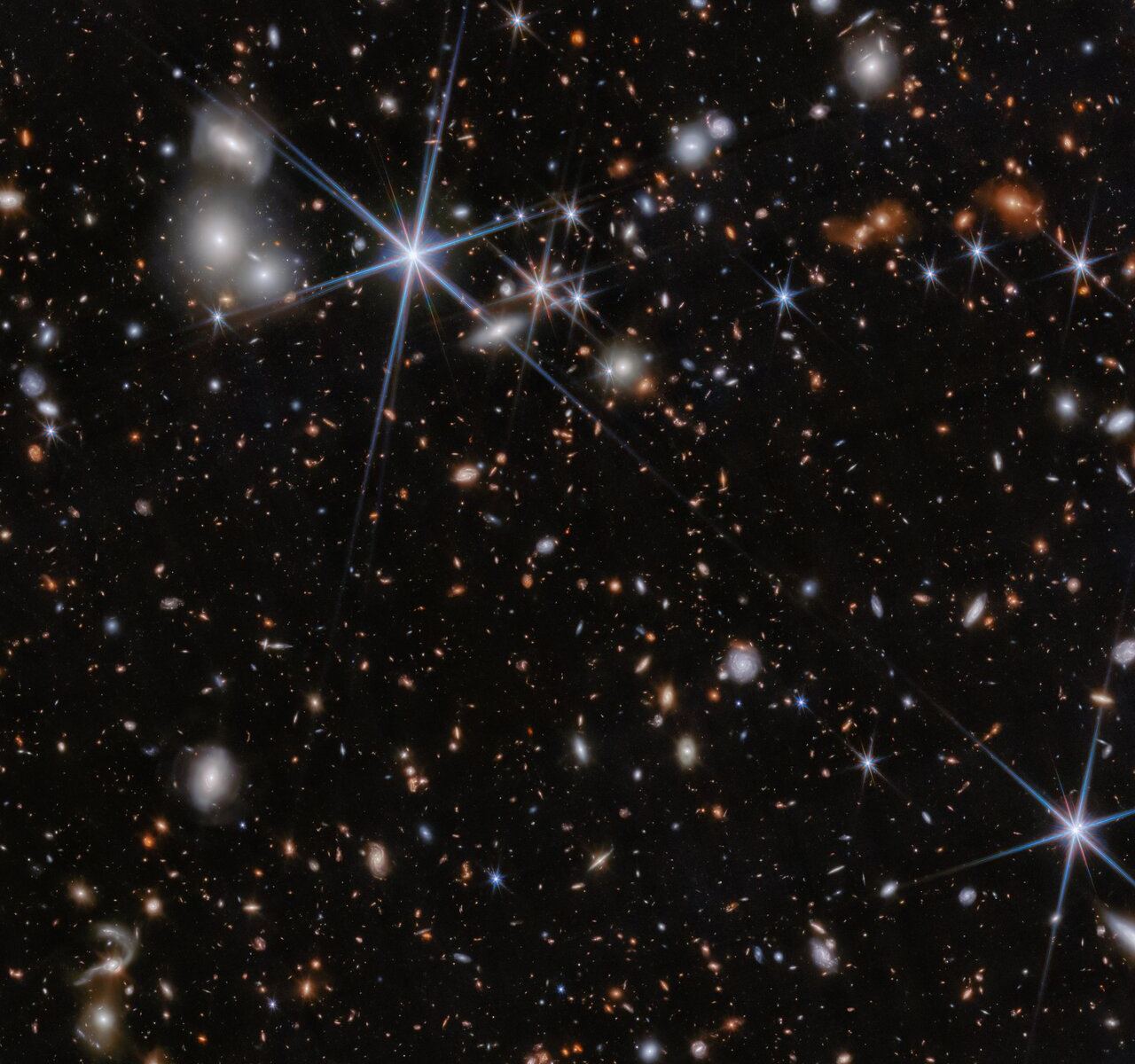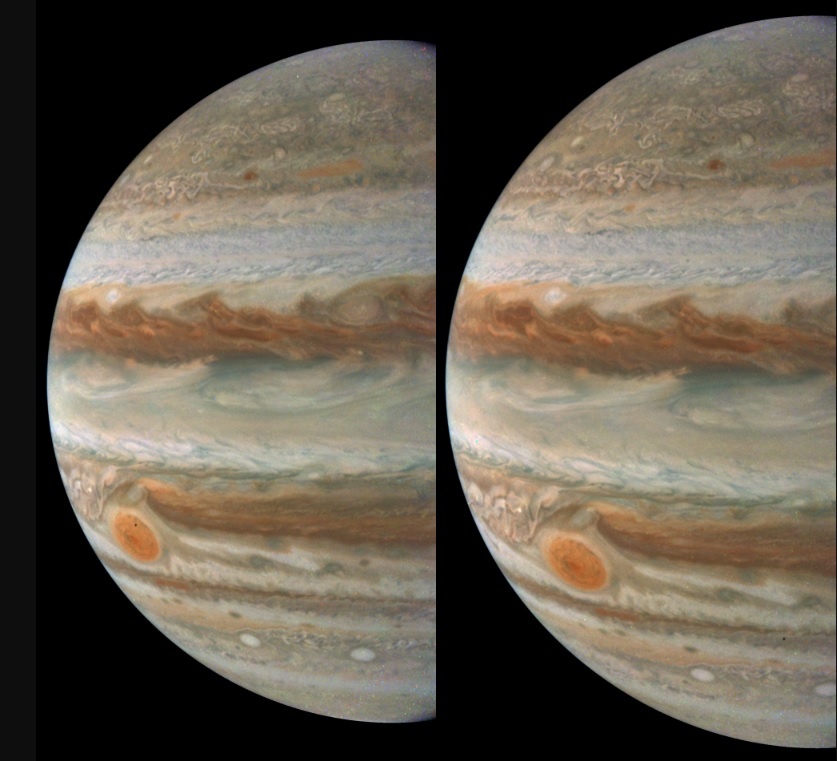Walking along on the surface of the Moon, as aptly demonstrated by the Apollo astronauts, is no easy feat. The gravity at the Moon’s surface is 1/6th of Earth’s and there are plenty of videos of astronauts stumbling, falling and then trying to get up! Engineers have come up with a solution; a robotic arm system that can be attached to an astronauts back pack to give them a helping hand if they fall. The “SuperLimbs” as they have been called will not only aid them as they walk around the surface but also give them extra stability while carrying out tasks.
Continue reading “Astronauts Could Deploy Extra Arms to Stay Stable on the Moon”Not All Black Holes are Ravenous Gluttons

Some Supermassive Black Holes (SMBHs) consume vast quantities of gas and dust, triggering brilliant light shows that can outshine an entire galaxy. But others are much more sedate, emitting faint but steady light from their home in the heart of their galaxy.
Observations from the now-retired Spitzer Space Telescope help show why that is.
Continue reading “Not All Black Holes are Ravenous Gluttons”Webb Sees Black Holes Merging Near the Beginning of Time

A long time ago, in two galaxies far, far away, two massive black holes merged. This happened when the Universe was only 740 million years old. A team of astronomers used JWST to study this event, the most distant (and earliest) detection of a black hole merger ever.
Continue reading “Webb Sees Black Holes Merging Near the Beginning of Time”The Sun Hurls its Most Powerful Flare in a Decades
The Sun has been vying for attention these last couple of weeks. First with the appearance of a fabulous complex sunspot region and then with a plethora of solar flares. On the 14th May, yet another was released, this time an X8.7 class flare from the same complex sunspot regions. It was significantly more powerful than the flare that set off the aurora displays which enchanted much of the planet but alas it was not pointing toward the Earth ( 🙁 sad emoji face.) Even though it was not directed at us, it could still disrupt communications and electronics but is a reminder that the Sun, whilst is on its way to solar maximum still has lots to give.
Continue reading “The Sun Hurls its Most Powerful Flare in a Decades”Juno Reveals Secrets About Europa’s Icy Surface
Europa has always held a fascination to me. I think it’s the concept of a world with a sub-surface ocean and the possibility of life that has inspired me and many others. In September 2022, NASAs Juno spacecraft made a flyby, coming within 355 kilometres of the surface. Since the encounter, scientists have been exploring the images and have identified regions where brine may have bubbled to the surface. Other images revealed possible, previously unidentified steep-walled depressions up to 50km wide, this could be caused by a free-floating ocean!
Continue reading “Juno Reveals Secrets About Europa’s Icy Surface”Scientists Test for Quantum Gravity
The tension between quantum mechanics and relativity has long been a central split in modern-day physics. Developing a theory of quantum gravity remains one of the great outstanding challenges of the discipline. And yet, no one has yet been able to do it. But as we collect more data, it shines more light on the potential solution, even if some of that data happens to show negative results.
Continue reading “Scientists Test for Quantum Gravity”New Photos Show Jupiter’s Tiny Moon Amalthea

NASA’s Juno spacecraft spies a tiny inner moon of Jupiter, Amalthea.
It’s tiny, but it’s there. By now, we’re all used to seeing amazing photos of Jupiter courtesy of NASA’s Juno mission on a routine basis. Many of these are processed by volunteer ‘citizen scientists,’ and they show the swirling cloud-tops of Jove courtesy of the spacecraft’s JunoCam in stunning detail.
Continue reading “New Photos Show Jupiter’s Tiny Moon Amalthea”Linking Organic Molecules to Hydrothermal Vents on Enceladus

Despite the vast distance between us and Saturn’s gleaming moon Enceladus, the icy ocean moon is a prime target in our search for life. It vents water vapour and large organic molecules into space through fissures in its icy shell, which is relatively thin compared to other icy ocean moons like Jupiter’s Europa. Though still out of reach, scientific access to its ocean is not as challenging as on Europa, which has a much thicker ice shell.
Continue reading “Linking Organic Molecules to Hydrothermal Vents on Enceladus”A Star Became 1,000 Times Brighter, and Now Astronomers Know Why
![Artist’s impression of one of the two stars in the FU Orionis binary system, surrounded by an accreting disk of material. What has caused this star — and others like it — to dramatically brighten? [NASA/JPL-Caltech]](https://www.universetoday.com/wp-content/uploads/2020/02/PIA20689_fig1.jpg)
Astronomers were surprised in 1937 when a star in a binary pair suddenly brightened by 1,000 times. The pair is called FU Orionis (FU Ori), and it’s in the constellation Orion. The sudden and extreme variability of one of the stars has resisted a complete explanation, and since then, FU Orionis has become the name for other stars that exhibit similar powerful variability.
Continue reading “A Star Became 1,000 Times Brighter, and Now Astronomers Know Why”New Answers for Mars’ Methane Mystery
Planetary scientists perk up whenever methane is mentioned. Methane is produced by living things on Earth, so it’s considered to be a potential biosignature elsewhere. In recent years, MSL Curiosity detected methane coming from the surface of Gale Crater on Mars. So far, nobody’s successfully explained where it’s coming from.
NASA scientists have some new ideas.
Continue reading “New Answers for Mars’ Methane Mystery”




